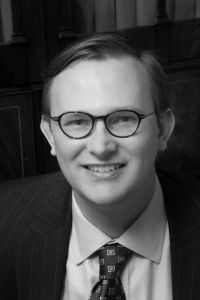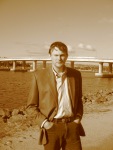This review first appeared here in The University Bookman.
Back when I was a pimple-faced graduate student in English and law, I ordered a book from Amazon titled Cultural Conservatism, Political Liberalism: From Criticism to Cultural Studies. The book had been out awhile, but I had only recently come across an intriguing piece by its author, James Seaton, a professor of English at Michigan State University. I read my purchase in earnest and then dashed off a complimentary email to Seaton days later. He responded, and we struck up a dialogue that continued for several years. I once visited him at the Russell Kirk Center for Cultural Renewal, where he spoke to a small crowd about George Santayana. He had just edited two of Santayana’s seminal essays for Yale University Press and had recruited Wilfred M. McClay, John Lachs, and Roger Kimball to contribute to the edition. We got along swimmingly, and Annette Kirk ensured that he and I had time alone to discuss whether I should apply to a doctoral program in English or continue down the path of the law.
Literary Criticism from Plato to Postmodernism has all the themes and qualities that first drew me to Seaton. It is a collection of Seaton’s latest essays and reviews revised and synthesized into a comprehensive case for humanistic inquiry. Amplifying his arguments from Cultural Conservatism, Political Liberalism and reformulating his principles about the value of literature to society, Seaton continues to undercut the discipline of cultural studies, which he decries for its “obligatory leftism.” His leading contribution—the subject about which he stands to forge new directions in the field of literary criticism—is to revitalize old contributions, namely, the humanistic tradition as defined by Irving Babbitt and as represented by Aristotle, Alexander Pope, Samuel Johnson, Matthew Arnold, Henry James, Edmund Wilson, Lionel Trilling, and Ralph Ellison. Chapters Two and Four are profitable beginnings of this project because they explain which critics (William Wordsworth and Samuel Taylor Coleridge) and which schools of criticism (Romanticism, Marxism, and the New Criticism) fall outside the humanistic tradition. These chapters, Four especially, are exciting, provocative, and significant. They supply the basis and much of the substance for the rest of the book and suggest that literature is not an agent of ideology, nor literary theory a master key that unlocks the door to grand solutions for political, scientific, and economic problems.
For those who are uninterested or unversed in literary criticism, however, reading Seaton will be like watching strategic athletic maneuvers—swing! parry! dive!—without a sense of what’s at stake in a sporting match whose tactics and rules are unknown. From the start he frames his argument with Plato and Aristotle, but today’s graduate students in English will be unclear what these men mean for the larger project of humanism or why they matter to contemporary audiences. With the exception of the Norton anthologies, most accounts of literary criticism in popular anthologies begin with Nietzsche in the late nineteenth century or with the New Critics in the early twentieth. The pinnacle of influence for these late critics roughly coincides with the development of English departments as institutions. To begin at the beginning—with the Greeks—will disorient those trained to look back at the literary canon through the prism of “contemporary” theories.
This remark is not a reproach of Seaton but of current literary studies; the chief merit of Seaton’s methodology is to demystify literary studies and to affirm there’s nothing new under the sun: the latest theories have definite antecedents (not necessarily good ones) and can be mapped by their continuity with other methodologies. Marxists of the Frankfurt School such as Herbert Marcuse, for example, follow in the wake of Plato: “Just as Plato had insisted on the necessity of censorship in his ideal Republic, Marcuse argued that suppression of free speech was required in the twentieth century for the establishment of what he considered true freedom.”
Seaton’s knack for classification emerges forcefully in the opening chapter. Here he arranges under three heads the whole history of literary criticism: the Platonic, the Neoplatonic, and the Aristotelian. He defines literary criticism as “a continuing conversation” among these three traditions inspired by just two Greek men. Adhering to the third category, the Aristotelian, which he calls humanistic, Seaton rejects the first because it questions the aesthetic value of literature, distrusts the sensory effects of literature, and treats great works as mere symptoms of ideological structures or institutions. “The philosophy of the Republic,” Seaton explains, “leaves no room for judging poetry according to literary excellence; all that counts is its political and social impact.” Seaton rejects the second, the Neoplatonic, for defending literature and poetry on the narrow and quixotic “basis of the moral and spiritual elevation it made possible.”
By contrast, Seaton submits, the “humanistic view of literature” might be “a middle way between the Platonic condemnation of art and literature and the Neoplatonic elevation.” The humanistic view “remains Aristotelian” because it considers “literature as a source of insight about human life” and is willing “to judge grand theory by the norms of common sense.” While Plato would expel poetry and theater from his ideal Republic, segregate poetry from philosophy, and train his Guardians to submit their virtues to the service of the State, Aristotle calls for “individual judgment about the literary merit and relevance to human life of particular works from audiences and certainly from would-be critics.” Neoplatonist overstatement about the manner in which “poetry brings us closer to the divine” also finds no place in Aristotelian humanism, which modestly maintains that literature “can tell us important things about human life but little about the universe.” Humanists write of the person as the person: they turn to literature to learn and to teach how to live well and wisely without fancying transcendental essences or utopian abstraction. The very crux of Aristotelian humanism is that “the importance of literature is linked to the significance of human life itself,” not to the political, ideological, or religious convictions that a work of literature implicates.
The triadic paradigm (Aristotelian, Platonist, Neoplatonist) may seem reductive, and indeed it is, but such reduction establishes recognizable classifications that encompass a diversity of interests and approaches while shaping a vocabulary for arranging distinctive properties into taxonomies to set apart certain authors and texts. Despite his skill for categorizing and simplifying schools of literary criticism, Seaton is steadfast that literary criticism is distinct in function and form from science: the former is as much an art as the art it explicates, whereas the latter is an empirical discipline that ascertains the natural rules of the phenomenal world by gathering and testing concrete data, building consensus among experts, and denominating general propositions to describe observable events. The contrast is not as sharp or essentialist as I have portrayed it—the pragmatic tradition of Peirce, James, and Santayana falls somewhere between art and science—but the fact that literary criticism has splintered into innumerable, contradictory schools suggests that the disparate methods and judgments of literary critics are not derived from shared conditions or by recourse to the same techniques.
Criticism of the humanistic variety championed by Seaton is found today not in academic journals but in popular literary reviews and journals such as this one. It has the important civic function of educating and inspiring mass audiences. Humanism rejects the “implicit promise” of cultural studies “that adepts gain the ability to make authoritative pronouncements about all aspects of human life without going to the trouble of learning the rudiments of any particular discipline.” Humanism, instead, engages in public debate without resorting to naked polemics; its practitioners understand or at least appreciate the complexity of the cultural norms and standards of readers outside the ivory tower. Professors in the academy, on the other hand, disconnected from the lifestyles and manners and conventions of the general public, tend to write themselves into little corners, retreating from the potential scrutiny of educated laypeople and insisting that true scholarship “requires specialization on topics specific enough to allow for the production of new knowledge, not open-ended conversation about questions to which no definitive answer is possible.” Seaton’s model of humanism advocates a different errand: “to make available to the larger culture the testimony of literature on human life … by accurately assessing the literary merit of the witness.”
They waste it that do state it with no style. Seaton, accordingly, makes short work of the “dominant theorizing” that lacks “literary distinction,” and he does so with his own unique style that remains as accessible to the educated layperson as it is to professional scholars of literature. His is not the delightfully repetitious, grandstanding prose of a Harold Bloom or Richard Poirier—the type of prose that, in its very makeup, shouts down the technical writing of hyper-professionalized humanities scholarship. Yet Seaton can turn a phrase with the best of them. Although it is a subsidiary point, the notion that a critic should write in a mode many people will enjoy is the literary equivalent to popular sovereignty: the common reader, not the expert, ought to determine which works continue to be read and therefore which become canonized. Like his guides Ralph Ellison and Dwight Macdonald, Seaton, mindful of his audience, takes pains to avoid jargon even as he discusses such theorists as Max Horkheimer and Theodor Adorno whose writing is riddled with esoterica.
Seaton ends with a hopeful note: “Although the task of addressing the arguments of the dominant contemporary theories is important, the decisive answer [to the question what to do now that the dominant theories dismiss the importance of literature to life and thought] will come from the literary criticism of the twenty-first century that conveys to the general public the pleasures and insights that poems, plays, and fiction continue to make available to all those willing to attend.” Let’s hope the coming decades yield critics like Edmund Wilson and Lionel Trilling, who were “members of a humanistic tradition capacious enough to study the connections between literature and society while also insisting that poems, plays, and novels should be judged on their own merits as works of art.”
It isn’t that the political and social sphere should be off-limits to critics, only that critics should, as Seaton does, subordinate their political and social presuppositions to aesthetic judgments, the most discerning of which account for the value of imaginative literature to plain living and high thinking. The best criticism helps us to understand how literature makes life better, more meaningful, and more fulfilling. Simple as it sounds, this proposition is tremendously complex because of the tremendous complexity of life itself. Held to his own high standards, Seaton succeeds: his chapters force you to consider what role literature has played in your own development, and how that role might play out in the lives of others. Good literature is more than a material object; it’s a way of living, a crucial check on those who purport to know it all with utter certainty.



